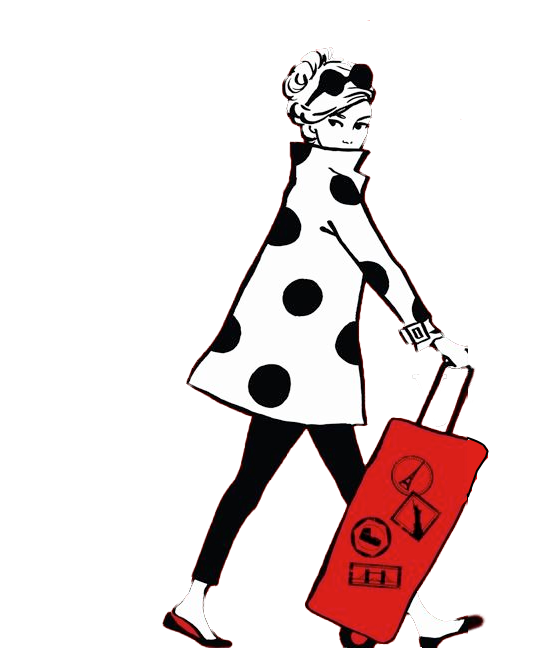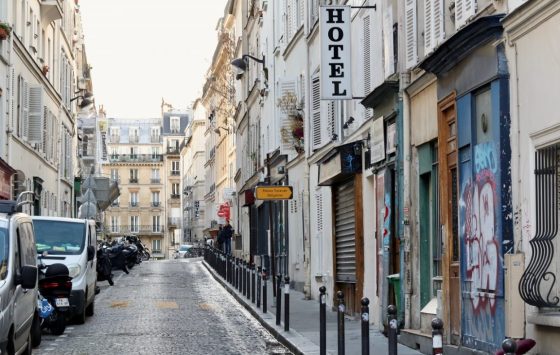It’s not by chance that Genova is not one of Italy’s prime destinations; its impacted verticality can be daunting, and its sprawling port and general air of having gone-to-seed are often off-putting to the casual visitor. (An unusually hip shopkeeper opined to me Genova was fifteen years behind other similarly-sized Italian cities, in a country that was itself fifteen years behind the rest of Europe.) But it has a few things going for it: the extreme beauty of its physical setting, with a cityscape of painted 18th-century apartment buildings tumbling down the Ligurian Apennine hills to the Mediterranean, and a largely intact mediaeval core and a rollicking maritime history. Not to mention a delightful way with food and wine, including producing the world’s most sublimely fragrant and intensely green pesto.
I lived through the good part of last summer in the city, with my two daughters and my Italian-born husband; his mother had grown up there before marrying his Puglian father, and then migrating to Australia in the mid 1970s. Rather like in Michael Winterbottom’s film Genova, it was a summer stained with grief, through the film’s absent mother was obviously not me. My own mother had died suddenly the year before and, as a travel writer might be expected to do, I sought the solace of disorientation, the familiarity of the unfamiliar.
The hot, humid days were sometimes punctuated by trips to the beach, but when Italy’s terminally-in-decline rail system was, in the heat, too much of a hassle to contemplate, we made do with the port’s postage-sized but location-perfect swimming pool or walks – up and down and around the city’s hillside network of stairs, grand public lifts and spiralling red brick paths, searching for glimpses of the sea and a place to spread a picnic rug. Then there was the endless shopping for food, devising menus, preparing food, and eating. Italy’s highly ritualised culinary habits can be as claustrophobic as Genova’s centro storico, but like the tightly wound knot of an ancient city, they can also bolster and comfort.
Our first apartment in the city was in the heart of that old city, in a ruined palazzo, as overdecorated as it was grimy, but with the small blessing of a terrace perched at the base of a 14th-century tower. The kitchen was barely functional, so we ate each night at a small restaurant downstairs cheerily named Mangia Buono (via di San Bernardo, Genova). The menu was hand-written and changed daily, but there were no surprises in the rota of cucina tipica Genovese staples – borage-stuffed ravioli, minestrone infused with pesto, rabbit braised with tiny black Taggiasche olives, sweet, fat, flash-fried anchovies with no adornment but a wedge of lemon. Why fix what isn’t broken?
One of the first dishes I ordered was corzetti di levante, large coin-like disks of pasta, the smooth blondness of its pinenut and parmesan sauce shot through with an astringent jolt of marjoram, the city’s signature herb. (The ‘levante’ mentioned in the pasta’s name does not refer to the Middle East, as I first thought, given both the pine nut topping and the Genovese’s wide-roaming ways, but rather is a nod to the eastern Ligurian towns of Chiavari and Recco from which the dish hails.) The corzetti themselves were each embossed with a pattern, the indentation not just making for a pretty face, but also allowing for each to hold its fair share of sauce.
Up the hill in apartment number two, with a better kitchen and the summer coming to an end, I wondered how I could go about making my own. The pasta dough simple enough, yes, but what of the stamp? The disks could, of course, be cut out like scones with a humble jam jar or espresso cup, but that would be missing the point. I still get a childlike thrill from stamps of any sort, always struck by the pleasure that comes from creating replicas, especially if its utilising pre-industrial tricks of the trade. Non-mechanical reproduction, if you will. I discovered a woodworker named Franco Casoni still plies his corzetti-carving trade in pretty Chiavari (the town’s also known for their turned wood chairs), each stamp customised on the spot for around €30.
Franco will do you up anything your heart desires, though traditional patterns include trees, laurel wreaths, butterflies, Punic-looking swirls and crosses. In fact, the pasta’s name is said to come from the Ligurian dialect term for ‘little cross’, dating the pasta to the Crusades. Other accounts place their origin a few centuries later, with wealthy Renaissance families flashing their noble coat of arms in front of guests at the pasta course – an early example of furthering your brand.
I was as keen as any Genovese aristocrat to have my own stamp made up, but with the master carver off on an extended holiday, I bought the simple, happy, geometric one you see above. This one came from the tiny Alladin’s cave of cookware shops, Butteghetta Magica di Tinello Daniela (via della Maddalena 2, Genova; +39 010 2474225), who must do a fair trade in them – I was offered a recipe in English with my purchase. It reminds me of a shortbread mould, but it’s neatly hollow on its reverse with a sharply beveled edge to do the cutting.
My first corzetti were commendable, if still a little too fatto a mano for my liking. Washed down with a glass of the local Pigato, a pale and airy white that also helped moisten the dough, they made for a wonderful late summer lunch. My mother would have turned her nose up at it all, and requested instead a cheese sandwich and a cup of tea. But she would have been proud.






